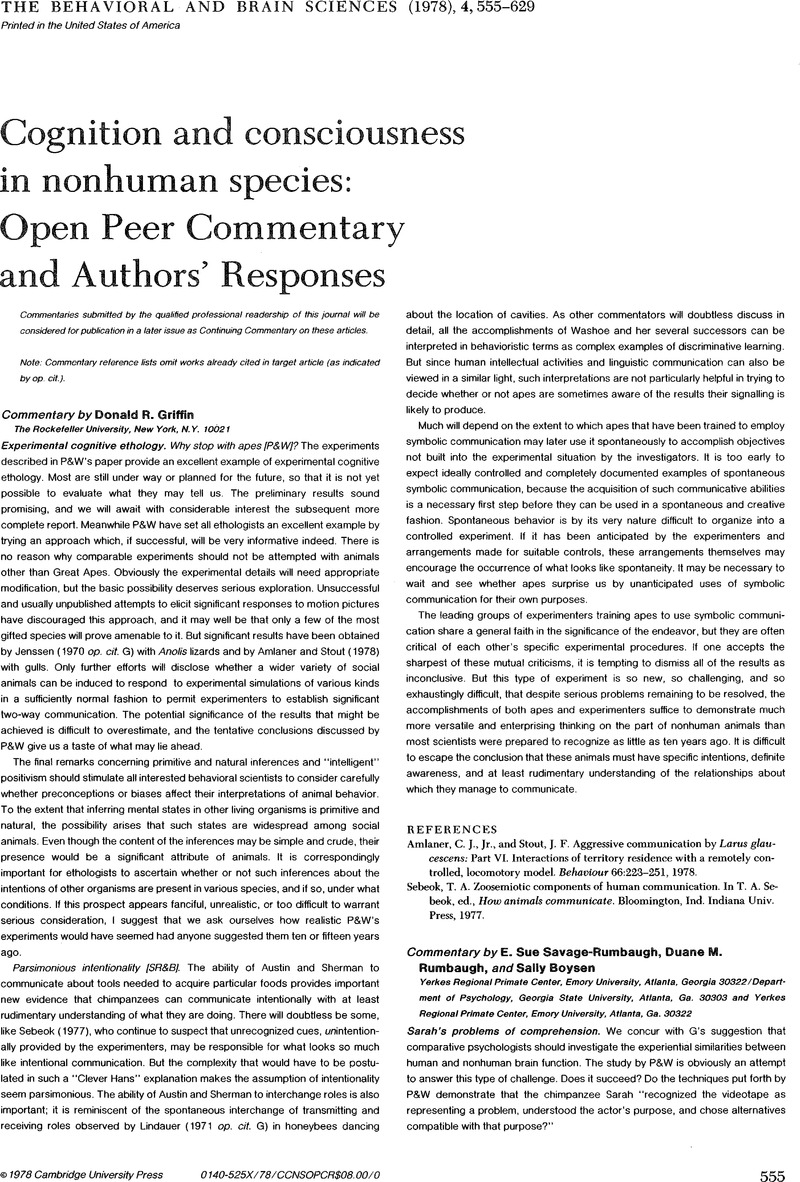No CrossRef data available.
Article contents
Evaluation as an indicator of intention [G]
Published online by Cambridge University Press: 04 February 2010
Abstract
An abstract is not available for this content so a preview has been provided. Please use the Get access link above for information on how to access this content.

- Type
- Open Peer Commentary
- Information
- Behavioral and Brain Sciences , Volume 1 , Issue 4: A Special Issue on Cognition and Consiousness in Nonhuman Species , December 1978 , pp. 584 - 585
- Copyright
- Copyright © Cambridge University Press 1978
References
REFERENCES
MacKay, D. M.On comparing the brain with machines. American Scientist 42:261–268, 1954.Google Scholar
MacKay, D. M. A mind's eye view of the brain. In Wiener, N., and Schade, J. P. (eds.), Cybernetics of the nervous system:Progress in brain research 17:321–332. Amsterdam: Elsevier, 1965.Google Scholar
MacKay, D. M. Cerebral organization and the conscious control of action. In Eccles, J. C. (ed.), Brain and conscious experience, pp. 422–445. New York: Springer-Verlag, 1966.Google Scholar
MacKay, D. M. Formal analysis of communicative processes. In Hinde, R. A. (ed.), Non-ver-bal communication, pp. 3–25. Cambridge:Cambridge Univ. Press, 1972.Google Scholar


